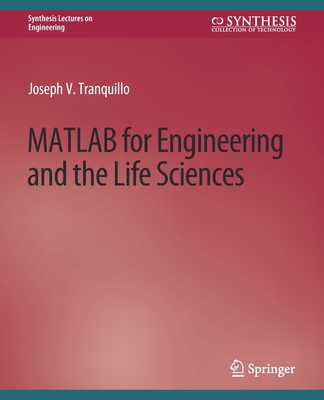You are here
Back to topMATLAB for Engineering and the Life Sciences (Paperback)
$41.99
Usually Ships in 1-5 Days
Description
In recent years, the life sciences have embraced simulation as an important tool in biomedical research. Engineers are also using simulation as a powerful step in the design process. In both arenas, Matlab has become the gold standard. It is easy to learn, flexible, and has a large and growing userbase. MATLAB for Engineering and the Life Sciences is a self-guided tour of the basic functionality of MATLAB along with the functions that are most commonly used in biomedical engineering and other life sciences. Although the text is written for undergraduates, graduate students and academics, those in industry may also find value in learning MATLAB through biologically inspired examples. For instructors, the book is intended to take the emphasis off of learning syntax so that the course can focus more on algorithmic thinking. Although it is not assumed that the reader has taken differential equations or a linear algebra class, there are short introductions to many of these concepts. Following a short history of computing, the MATLAB environment is introduced. Next, vectors and matrices are discussed, followed by matrix-vector operations. The core programming elements of MATLAB are introduced in three successive chapters on scripts, loops, and conditional logic. The last three chapters outline how to manage the input and output of data, create professional quality graphics and find and use Matlab toolboxes. Throughout, biomedical examples are used to illustrate MATLAB's capabilities. Table of Contents: Introduction / Matlab Programming Environment / Vectors / Matrices / Matrix -- Vector Operations / Scripts and Functions / Loops / Conditional Logic / Data In, Data Out / Graphics / Toolboxes.
About the Author
Joseph Tranquillo is an associate professor of biomedical engineering at Bucknell University where he has been a faculty member since 2005. He received his Doctor of Philosophy degree in biomedical engineering from Duke University (Durham, NC) and Bachelor of Science degree in engineering from Trinity College (Hartford, CT). His teaching interests are in biomedical signals and systems, neural and cardiac electrophysiology, and medical device design. Nationally Joe has published or presented over 40 peer reviewed or invited works in the field of engineering education. He was the founder and inaugural chair of the Undergraduate Research Track at the Biomedical Engineering Society (BMES) conference, co-organized the Biomedical Engineering Body-Of-Knowledge Summit and currently serves on the board of the Biomedical Engineering Division of the American Society of Engineering Education (ASEE). He is the winner of the 2010 National ASEE Biomedical Engineering Teaching Award. His technical research interests are in non-linear dynamics in the heart and brain. He has over 50 publications and presentations, and he has authored a textbook, Quantitative Neurophysiology. He is a member of the Biomedical Engineering Society, IEEE Engineering in Medicine and Biology Society, American Physical Society and is an elected member of Sigma Xi and Heart Rhythm. When not teaching or doing research, he enjoys improvisational dance and music, running trail marathons, backpacking, brewing Belgian beers, and raising his two children Laura and Paul.
